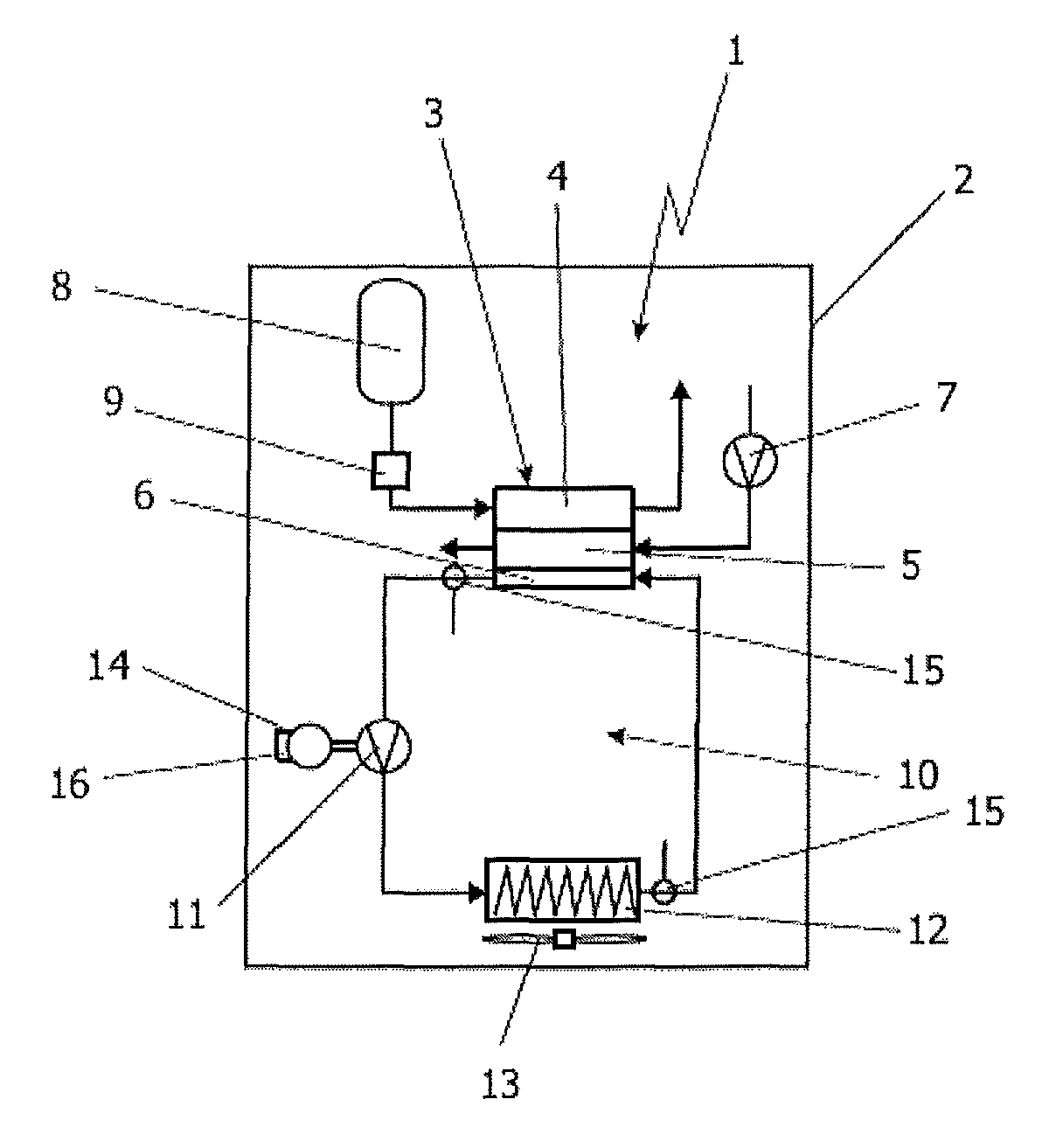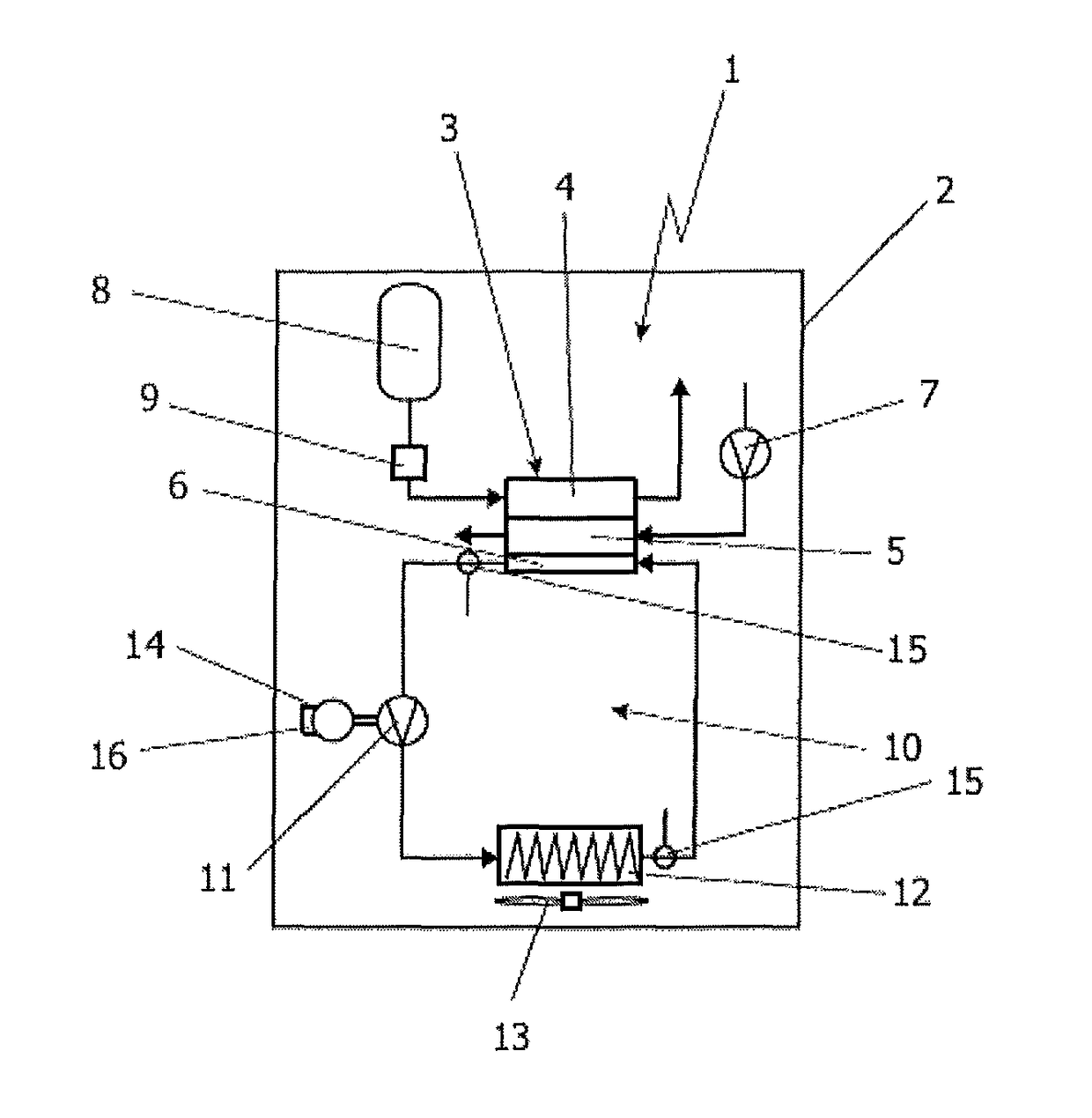Method for cooling a fuel cell
a fuel cell and cooling technology, applied in the field of fuel cell cooling, can solve the problems of generating a certain quantity of waste heat, prone to errors, critical, costly, etc., and achieve the effect of simple and efficient means and secure and reliable operation of the fuel cell
- Summary
- Abstract
- Description
- Claims
- Application Information
AI Technical Summary
Benefits of technology
Problems solved by technology
Method used
Image
Examples
Embodiment Construction
[0014]A fuel cell system 1 in a highly schematic illustration is apparent in the single appended FIGURE. The fuel cell system 1 is intended for installation in an indicated vehicle 2. The core of the fuel cell system 1 is a fuel cell 3, which by way of example is designed as a PEM fuel cell. In its interior the fuel cell 3 essentially has three separate chambers, which in the customary design are in each case implemented as single cells which are then stacked to form a fuel cell stack, a so-called stack. The individual chambers of the single cells of the fuel cell stack 3 are then connected to one another via corresponding line elements or collectors. The chambers illustrated in the FIGURE, using the example of a single cell, are an anode chamber 4, a cathode chamber 5, and a chamber 6 through which a liquid cooling medium flows and which could also be referred to as a cooling heat exchanger. In a manner known as such, the cathode chamber 5 is supplied via an air conveying device 7 ...
PUM
 Login to View More
Login to View More Abstract
Description
Claims
Application Information
 Login to View More
Login to View More - R&D
- Intellectual Property
- Life Sciences
- Materials
- Tech Scout
- Unparalleled Data Quality
- Higher Quality Content
- 60% Fewer Hallucinations
Browse by: Latest US Patents, China's latest patents, Technical Efficacy Thesaurus, Application Domain, Technology Topic, Popular Technical Reports.
© 2025 PatSnap. All rights reserved.Legal|Privacy policy|Modern Slavery Act Transparency Statement|Sitemap|About US| Contact US: help@patsnap.com


